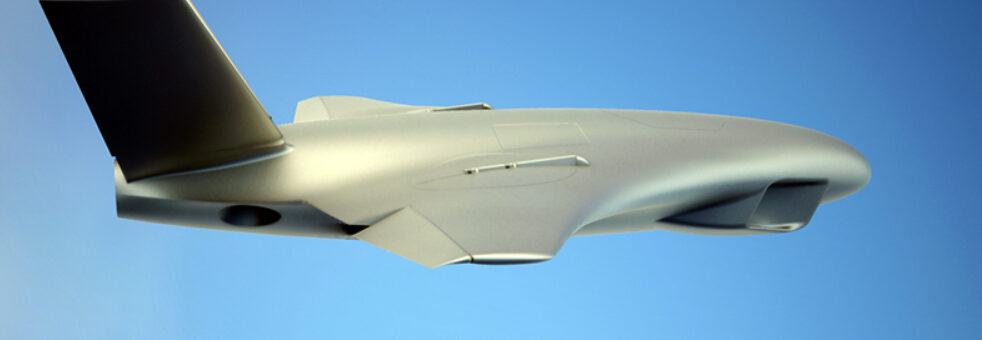
The Future of Aviation – The High-Speed VTOL X
WV – Have you heard of Aurora Flight Sciences’ VTOL X plane? This aircraft features technologically advanced wing fans that are designed to allow it to fly fast and take off and land on short runways or where paved and turf runways are not present. The development and testing of this unique flying machine is aided with funding from DARPA, which stands for the Defense Advance Research Projects Agency.
Aurora Flight Science History
Aurora Flight Sciences has been developing unique and technologically advanced aircraft for more than 35 years. The company was founded in 1989 by John S. Langford. The company was originally located in Alexandria, VA before swiftly moving to the Manassas Regional Airport (HEF) in 1991 due to the need for more space. Later in 1991, Aurora Flight Sciences debuted the Perseus POC. This was an unmanned, propellor-driven aircraft that was purpose-designed for atmospheric research, which involves the study of the circulation of the atmosphere across our planet concerning storms and climate change. Some tasks that these aircraft might perform include flying into thunderstorms and hurricanes, taking temperatures and wind speeds both near the surface and in the upper atmosphere, and flying inside the polar and subtropical jet streams.
In 1993, Aurora Flight Sciences developed the Perseus A, which was the working model of the Perseus POC. In 1994, they opened a 68,000-square-foot facility in West Virginia and developed the Perseus B, which was a NASA project for environmental research. In the late 90s, they developed the Global Hawk RQ-4A, the Chiron Optimally Piloted Aircraft System, the twin-engine Theseus, the UCAV Subscale Decomstrator, the Jason sUAS, and the Mars Airplane Project.
In the early 2000s, Aurora continued its Mar’s projects with the Mars High Altitude Deployment Demonstrator before beginning its trek into ducted-fan UAVs (Unmanned Aerial Vehicles). This aviation technological adventure started with the GoldenEye 100, the GoldenEye 50, and the GoldenEye 80.
By 2017, they’d caught the attention of Boeing, and Boeing eventually acquired the company as a fully-owned subsidiary. Most recently, in May 2024, Aurora Flight Sciences announced their refined concept for the High-Speed VTOL X aircraft, which is an advanced, short take-off and landing and high-speed aircraft that utilizes wing fans for dramatically improved air mobility.
What is the VTOL X Aircraft?
The VTOL X-plane is a concept design that’s recently undergone a review of its concept. It’s all part of the Speed and Runway Independent Technologies (SPRINT) program under DARPA, which is where some of this project’s funding is coming from. The conceptualized design passed Phase 1, and the aircraft has been approved for further review. This means that the project can continue to be developed in hopes of eventually building a test model and going into production.
This VTOL X-plane is designed to take off and land vertically with the help of three wing fans, and it is expected to be able to travel at 450kts while taking off and landing vertically. Future designs indicate the ability to add four or more fans for improved performance.
The VTOL X-plane’s biggest feature is its blended-wing design, and if you’re an aircraft enthusiast, you may have already heard of flying wings or lifting body designs. However, all three of these aircraft designs are unique and different from traditionally designed aircraft.
- Blended-Wing – This is sometimes referred to as a blended wing body, blended body, or hybrid wing body. These aircraft receive the name blended wing because there’s no clear dividing line between the fuselage and the wings. These types of aircraft designs are lauded for their ability to reduce drag while increasing lift.
- Flying Wing – A flying wing does not have a definable fuselage. Various flying wings include the Lockheed Martin RQ-170 Sentinel, the Northrop B-2 Spirit and the Northrop YB-49.
- Lifting Body – A lifting-body aircraft doesn’t have any definable wings. An example of this type of aircraft is the HL-10, which was developed by NASA in the late 1960s.
The goal for the development of the X plane is to test the technologies and concepts involved in creating high-speed aircraft that are runway-independent, meaning that they can take off and land on helipads, ships, or in small, cleared areas, rather than needing runways that span thousands of feet. Additionally, the VTOL X aircraft is unmanned and operated remotely.
Vertical or Horizontal Flight
The VTOL X aircraft design is advanced because of its ability to fly both vertically and horizontally. The vertical lift fans are located inside the wings and contain covers. This means that for short runways, the covers open, and the fans take charge of the takeoff or landing. If there is a runway present, the covers can be left closed, and the aircraft can land horizontally on the runway.
The goal of the VTOL X aircraft is to demonstrate the advancements in aviation technology and improve air mobility when it comes to advanced flight and special operations missions. In addition to the VTOL X aircraft, Aurora Flight Sciences is also working on the Liberty Lifter seaplane and a Sustainable Flight Demonstrator that’s being developed with reduced carbon emissions in mind. Aurora Flight Sciences is dedicated to advancing aircraft technology for use on Earth and other planets in our solar system and beyond.